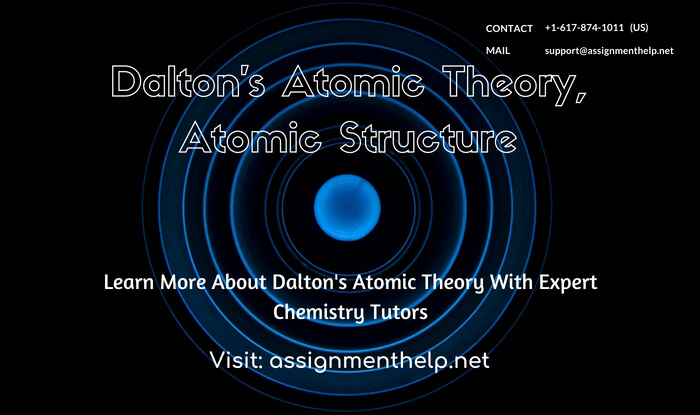Dalton's Atomic Theory, Atomic Structure
What is Atomic Theory?
In chemistry, atomic theory is a theory of the nature of matter, which states that matter is composed of discrete units called atoms. Atomic theory is the idea that matter is made up of little units called atoms. Atoms were thought to be the smallest possible division of matter until 1897 when British scientist J.J. Thomson discovered the electron through his work on cathode rays.
In 1897, J. J. Thomson dramatically changed the modern view of the atom with his discovery of the electron. Thomson's work suggested that the atom was not an indivisible particle as John Dalton had suggested but, a jigsaw puzzle made of smaller pieces.
Dalton’s Atomic Theory
John Dalton was an English chemist, meteorologist and physicist published who his theory about atoms in the year 1808. He is best known for his pioneering work in the development of modern atomic theory, and his research on colour blindness (sometimes referred to as Daltonism, in his honour). His atomic theory was popularized and confirmed experimentally over the course of the early 19th century.
In 1808, John Dalton published a list of elements along with their atomic weights in his 'New System of Chemical Philosophy', for which he received the Royal Medal in 1826. Following are some of the important points, proposed by John Dalton in his atomic theory:

- All elements are made up of tiny indivisible particles, known as atoms
- Atoms can neither be divided into smaller particles nor destroyed
- Atoms of two or more different elements combine together to form chemical compounds
- Atoms of the same element are identical with respect to their weights
- Atoms of different elements are different from each other and can be identified by their relative weights
- Chemical reactions occur due to the rearrangement of the atoms
- Atoms combine in the ratio of whole numbers such as 1:1, 1:2, 2:3 etc.
Dalton’s atomic theory was successful in offering explanations for the following facts.
(i) It gave satisfactory explanation for the chemical combination.
(ii) It explained most of the properties of gases and liquids known at that time.
However, Dalton’s atomic theory failed to explain the following facts:
(i)It did not explain why atoms of different elements should differ in their masses, valancies etc.
(ii) It did not explain the existence of isotopes and isobars.
(iii) It did not explain why there should not be some material difference in the “make up of atoms of different elements.

Various experiments convinced the scientists that atom is not indivisible but consists of smaller fundamental particles. It is now fully established that atom consists of three major fundamental particles called electrons, protons and neutrons.
In 1911, Rutherford, a student of J. J. Thomson, put forth the view that an atom consisted of a dense positive core at the center or nucleus, surrounded by electrons. He named the positive particles in the nucleus as protons and stated that protons were larger than the electrons and carried an equal and opposite charge to electrons. Later in 1932, James Chadwick discovered the electrically neutral particle in the atom and named it as the neutron. Thus, modern atomic theory was developed.
Our Customer Service Support Center
Assignmenthelp.net's Services – ready to help students around the clock (24/7 technical support) Live Supports by Phone, Chat or E-mail (support@assignmenthelp.net). The assignments/data we provide is plagiarism free and we offer free download facility of Chemistry tutorials as well. Expert chemistry tutors at Assignmenthelp.net provide all sorts of help regarding your problems in chemistry through E-mail and live chat.
To submit Chemistry (Atomic Theory) assignments Click here


